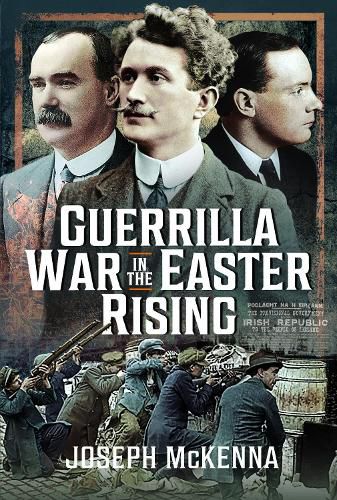Readings Newsletter
Become a Readings Member to make your shopping experience even easier.
Sign in or sign up for free!
You’re not far away from qualifying for FREE standard shipping within Australia
You’ve qualified for FREE standard shipping within Australia
The cart is loading…






On Easter Monday 1916, Irish rebels seized a number of strategic buildings in Dublin, including the General Post Office on O'Connell Street, and declared an Irish Republic. Within a week they had been bombarded into surrender. Out in the countryside, amidst chaos and confusion over counter orders, the Rising failed to materialize as planned. The one notable exception was the campaign of the Fingal Brigade of North County Dublin. Their leader, the charismatic Tom Ashe, launched a fast moving guerrilla campaign against the para-military Royal Irish Constabulary, seizing barracks and capturing arms. At Ashbourne the Irish Volunteers, having captured the RIC barracks, were faced with the arrival of a numerically superior force of armed policemen. Using tactics evolved from British army training manuals, they overcame and defeated the police. Ashe and Fingal Brigade had shown that fast moving guerrilla warfare was the way ahead in the future struggle for Irish independence This little-known yet crucial development in the Irish War of Independence is well researched and described in this over-due account. AUTHOR: Joseph McKenna is a retired local history librarian with over 30 yearsexperience working in the Central Library in Birmingham. He has a Master of Arts degree in Local History and has written a number of books on revolutionary Ireland. These range from the Irish-American bombing campaign of the 1880s, the Easter Rising, Guerrilla Warfare, and Women in the Struggle for Irish Independence to the IRA bombing Campaign of 1939-40. His local history publications include Clockmakers & Watchmakers of Central England, A Journal of the English Civil War, and the Gunmakers of Birmingham. Joseph McKenna formerly sat on Birmingham City Councils Conservation Areas Committee and the Birmingham Archdiocese Historical Commission. He is married with one son. 30 b/w illustrations
$9.00 standard shipping within Australia
FREE standard shipping within Australia for orders over $100.00
Express & International shipping calculated at checkout
On Easter Monday 1916, Irish rebels seized a number of strategic buildings in Dublin, including the General Post Office on O'Connell Street, and declared an Irish Republic. Within a week they had been bombarded into surrender. Out in the countryside, amidst chaos and confusion over counter orders, the Rising failed to materialize as planned. The one notable exception was the campaign of the Fingal Brigade of North County Dublin. Their leader, the charismatic Tom Ashe, launched a fast moving guerrilla campaign against the para-military Royal Irish Constabulary, seizing barracks and capturing arms. At Ashbourne the Irish Volunteers, having captured the RIC barracks, were faced with the arrival of a numerically superior force of armed policemen. Using tactics evolved from British army training manuals, they overcame and defeated the police. Ashe and Fingal Brigade had shown that fast moving guerrilla warfare was the way ahead in the future struggle for Irish independence This little-known yet crucial development in the Irish War of Independence is well researched and described in this over-due account. AUTHOR: Joseph McKenna is a retired local history librarian with over 30 yearsexperience working in the Central Library in Birmingham. He has a Master of Arts degree in Local History and has written a number of books on revolutionary Ireland. These range from the Irish-American bombing campaign of the 1880s, the Easter Rising, Guerrilla Warfare, and Women in the Struggle for Irish Independence to the IRA bombing Campaign of 1939-40. His local history publications include Clockmakers & Watchmakers of Central England, A Journal of the English Civil War, and the Gunmakers of Birmingham. Joseph McKenna formerly sat on Birmingham City Councils Conservation Areas Committee and the Birmingham Archdiocese Historical Commission. He is married with one son. 30 b/w illustrations